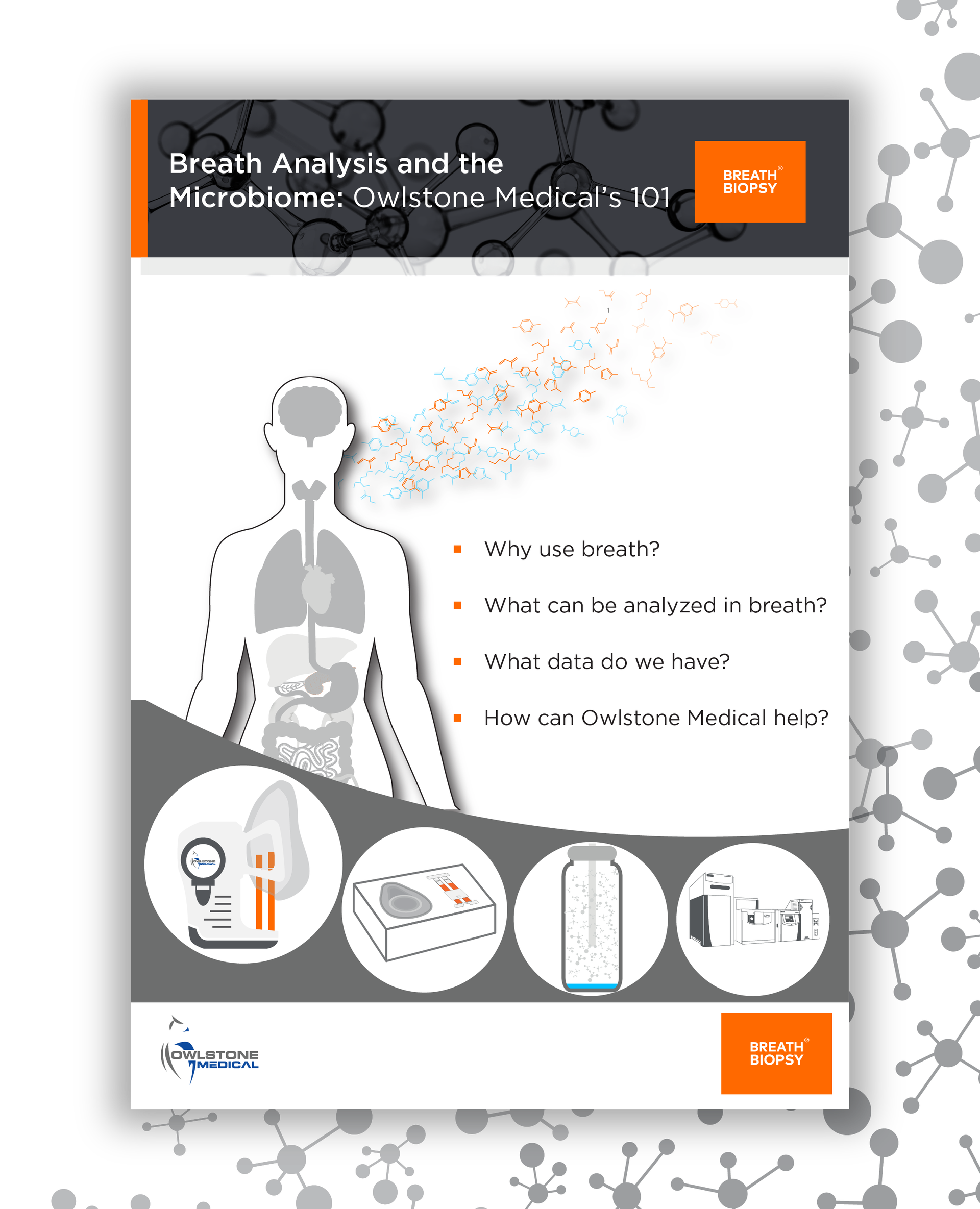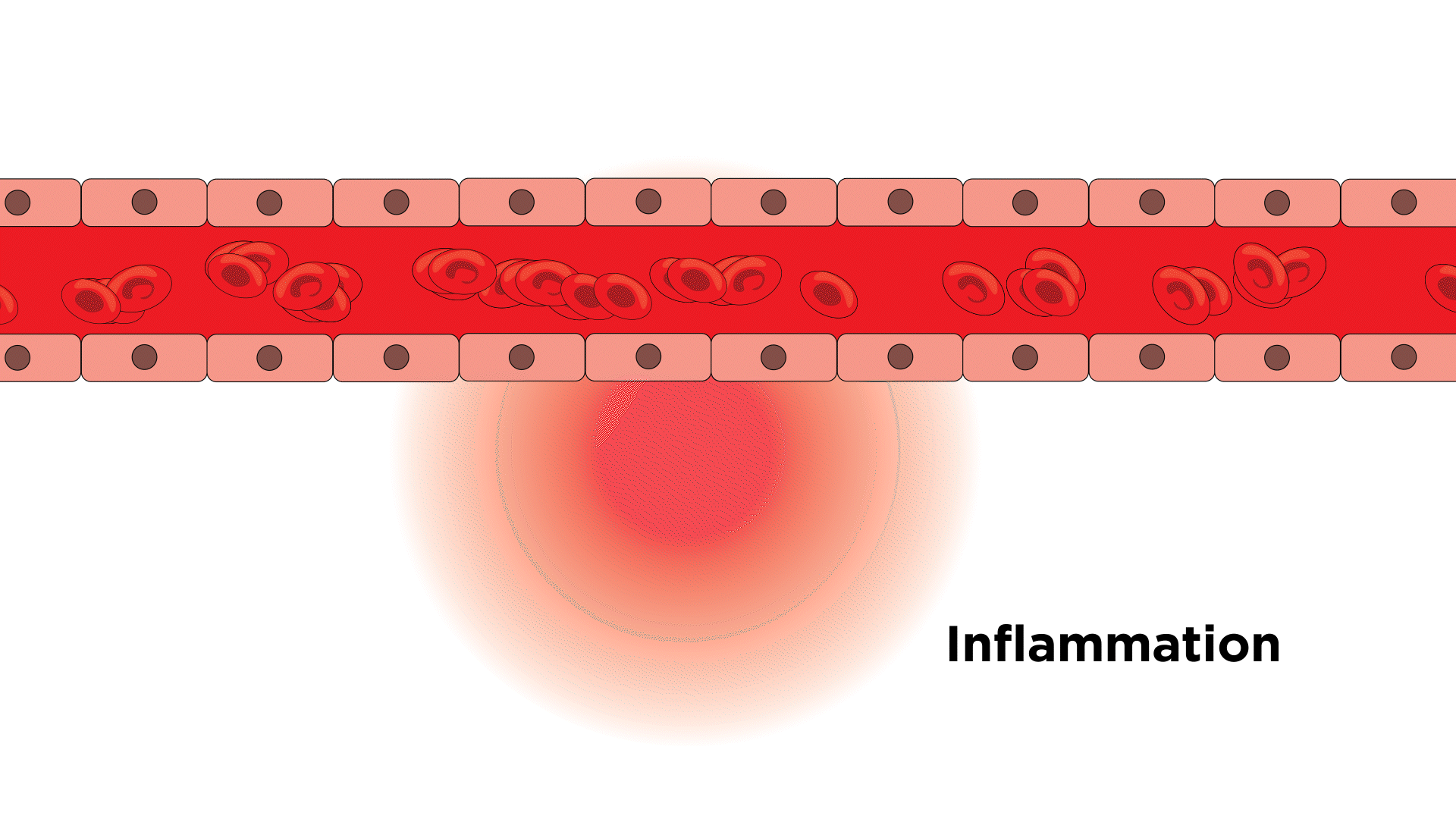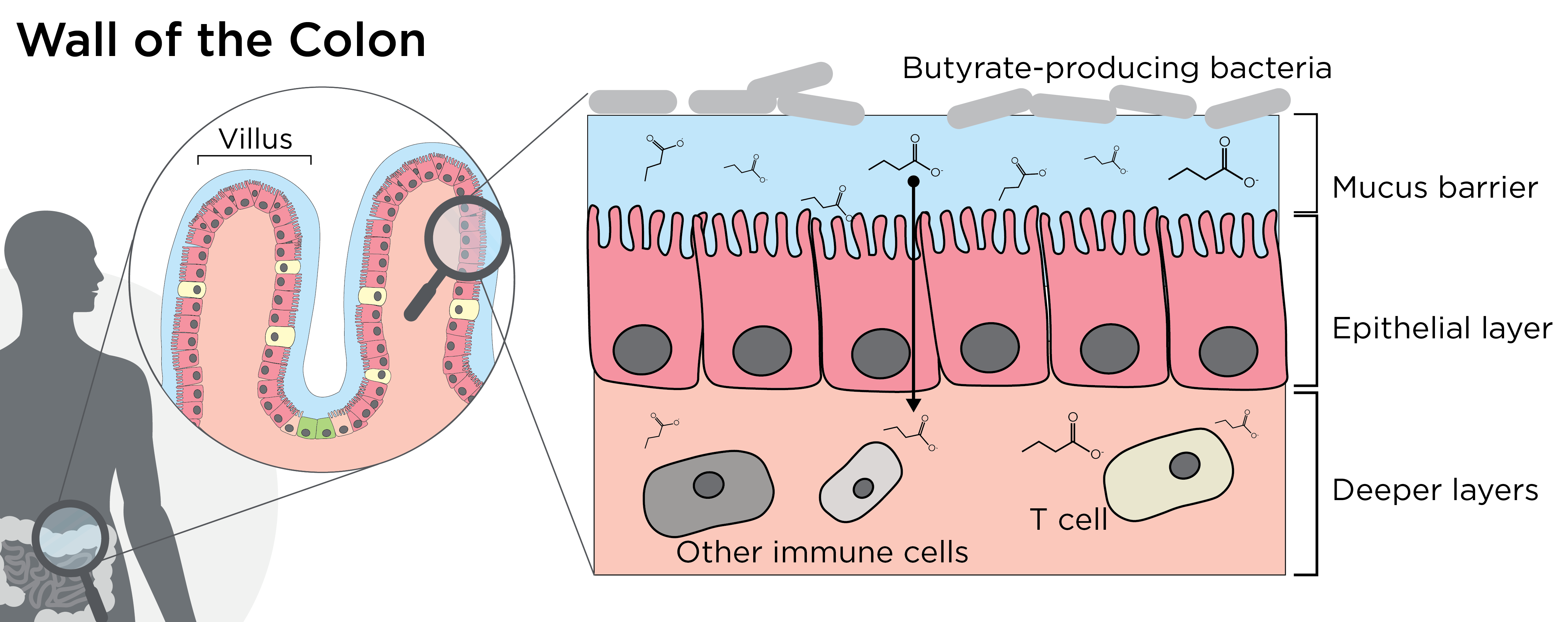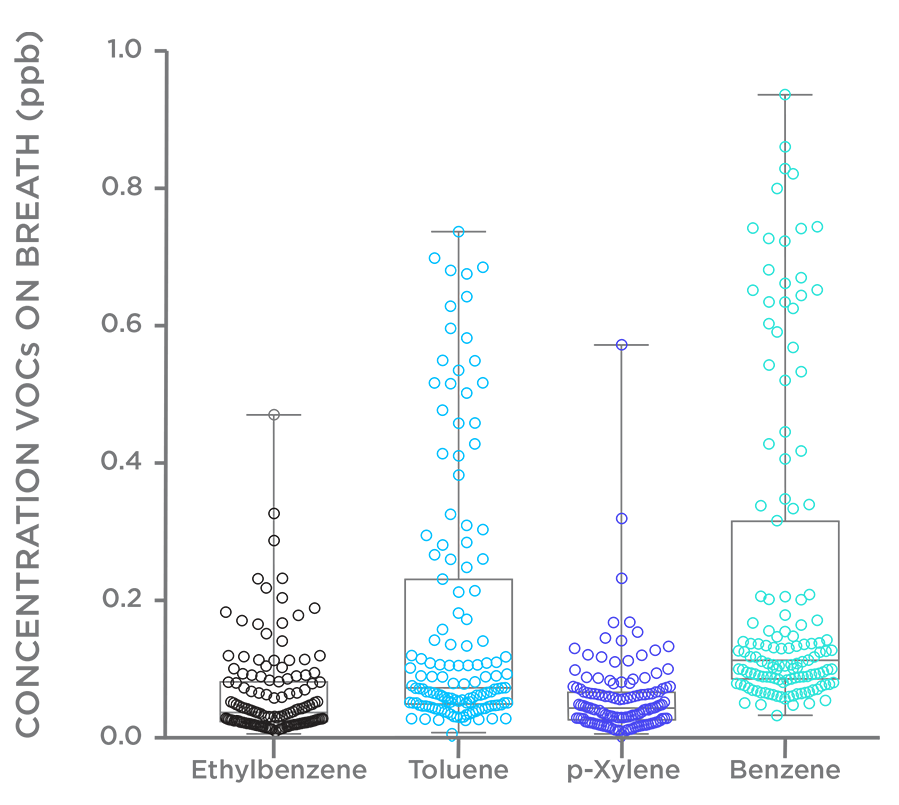The origins of volatile compounds in exhaled breath
Published on: 7 Jul 2023
In the third installment of our introductory blog series, we will cover:
- Where do the volatile compounds in breath originate from?
- Endogenous compounds
- Exogenous compounds
Where do volatile compounds in breath originate from?
Breath contains many compounds of interest that can be used as biomarkers for clinical research and applications. It is specifically enriched for volatile organic compounds (VOCs) that can serve as biomarkers for a variety of potential clinical uses, including as diagnostic and monitoring metrics during clinical trials. A dizzying number of compounds are produced all over the body constantly, through the multitude of metabolic processes ongoing, but what processes can volatile chemicals found in breath originate from? There are two major origins of volatile compounds, those that are produced from inside the body, known as endogenous compounds, or those that are produced from outside of the body, known as exogenous compounds.
Endogenous compounds
Two examples of endogenous processes in the body that can produce volatile compounds are inflammation, a form of altered metabolic state utilized commonly by rapidly dividing cells, including cancerous cells, known as the Warburg effect.
Inflammation is involved in the pathology of many disease conditions, especially long-term chronic inflammation that becomes increasingly prevalent with age can be a factor in cancer progression and can be detrimental to health. Inflammation is a complex and multifactorial process, but one process that can be caused by inflammation is lipid peroxidation, which happens as a result of oxidative stress within cells. Lipid peroxidation can produce volatile compounds such as acetaldehyde, various alkanes, alkenes, and other small-chain hydrocarbons. Importantly, the specific volatile compounds produced depend on the different cell types, and hence different tissues in the body that are affected. This means that different volatile inflammatory markers can be associated with different disease pathologies, and these the pattern of volatile lipid peroxidation products in breath can serve as biomarkers for the presence of these diseases.
The Warburg effect describes an altered form of metabolism and sees the shift from the dominant form of energy production, the Krebs cycle to glycolysis. This leads to a markedly different molecular signature given out by the body, including an increased number of ketones like acetone, acetoacetate, and β-hydroxybutyrate being produced from excess acetyl-COA (1). This subsequently increases the amount of acetone in the body, which is a volatile chemical capable of traveling through the blood to be detected in exhaled breath. The specific pattern or signature of volatile chemicals in breath can therefore indicate altered biological processes in the body, presenting a strong rationale for their use as biomarkers in medical technology.
Exogenous compounds
As well as originating from metabolic processes within the body, many volatile chemicals can originate externally, either from microbial metabolism from the microbiota within the body or from the outside air that has been inhaled from either current or recent environmental exposure. Two examples of each type of exogenously originating VOC will be discussed, butyrate which originates from gut microbial metabolism, and BTEX compounds (benzene, toluene, ethylbenzene, and xylenes) which are inhaled from the environment.
Butyrate is one of the short-chain fatty acids that have been discussed previously in this blog series, and is produced by microbial fermentation of dietary fibre in the colon. Specifically, butyrate is produced through the butyryl CoA:Acetate CoA transferase pathway, and the specific microbial species in the gut, as well as amounts and types of fiber consumed in the diet can module the ultimate amount of butyrate produced (2). Butyrate has a broad range of physiological impacts on the body, including regulating the immune system, and directly influencing metabolic processes such as lipid and glucose metabolism through direct interaction with receptors. Butyrate is volatile, and microbially produced butyrate from the colon is detectable in exhaled breath. Although butyrate is produced through non-human metabolism, as the microbes that produce metabolites are situated physically within the body, the method through which butyrate enters into the breath is analogous to endogenously originating volatile compounds. The volatile compounds produced in the gastrointestinal tract can travel through the surrounding blood vessels to launch into the air at the alveolar surface.
The other form of exogenous VOCs are those that have been inhaled from the outside air. These compounds can be considered in two ways: as background signals that can be eliminated for analytical purposes to look for compounds specifically only originating from within the body, or as informative compounds to assess, for example, environmental exposure to certain chemicals.
The World Health Organization has estimated that a significant number of global deaths are due to environmental risk factors from an unhealthy living or working environment, with exposure to air, water, soil, and other chemical pollutants exposures resulting in poorer overall health, as well as increased risk of certain diseases and injuries (3). The BTEX compounds are common chemicals of interest in exposure studies, as long-term exposure to BTEX compounds can affect the organ systems in the body. High levels of benzene in particular can lead to the development of certain cancers such as leukemia. Typically, sources of exposure to BTEX compounds are smoking, vehicle emissions, solid fuel fires, and occupational exposure. Due to the widespread exposure and resulting serious health effects, they are example target compounds for measuring rates of exposure in exhaled breath.
Owlstone Medical has performed an analysis that showed that levels of BTEX compounds in exhaled breath could be measured down to PPT concentrations. In this case, we were able to distinguish between smokers and non-smokers based on the concentration of benzene and other markers in breath. You can find out more about this work from our research poster.
This blog has covered how volatile compounds detectable in exhaled breath can have endogenous and exogenous origins, but just how are these measured and identified in the breath? The next blog in our introductory series will focus on the method of how volatile chemicals are quantified and identified.
Analysis of volatile compounds in exhaled breath, or those emitted from in vitro samples can an incorporated in a variety of innovative ways in your research. If you are interested in finding out how you could incorporate breath analysis in your research, please do not hesitate to contact us.
References
- Janfaza S, Khorsand B, Nikkhah M, Zahiri J. Digging deeper into volatile organic compounds associated with cancer. Biol Methods Protoc. 2019 Nov 27;4(1):bpz014. DOI: 10.1093/biomethods/bpz014
- Cronin P, Joyce SA, O’Toole PW, O’Connor EM. Dietary Fibre Modulates the Gut Microbiota. Nutrients. 2021 May 13;13(5):1655. DOI: 10.1093/biomethods/bpz014
- An estimated 12.6 million deaths each year are attributable to unhealthy environments [Internet]. [cited 2023 Jun 13]. Available from: https://www.who.int/news/item/15-03-2016-an-estimated-12-6-million-deaths-each-year-are-attributable-to-unhealthy-environments



